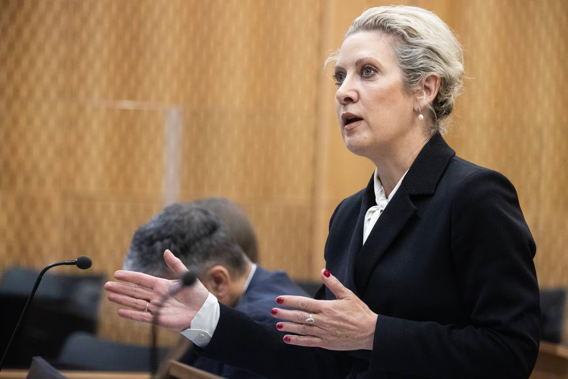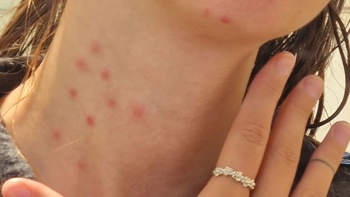
Six minutes after the Christchurch gunman sent a chilling manifesto to the Prime Minister’s office, a parliamentary staffer called 111 to report the “concerning” contents.
That would be the first of many calls to 111 about the unfolding terror attack and its ghastly aftermath.
The staffer told police that the email outlined an “attack on Christchurch”, threatened the use of firearms and explosive devices - and named three particular mosques.
The sender - who gave his name as Brenton Tarrant - was “claiming some sort of political ideology” and his manifesto had “a white supremacist theme”.
The parliamentary staffer told police while he suspected the email was a hoax, he was still concerned enough to alert them almost immediately after he received it.
He never could have imagined what would happen next.
That staffer who made that emergency call has given evidence today at the coroner’s inquest into the 2019 terrorist attack.
His name cannot be published.
He was contacted by a colleague on March 19, 2019 after the manifesto landed in a generic inbox for then Prime Minister Jacinda Ardern.
The colleague was worried about the contents of the email - which was also to about 70 other recipients including then National leader Simon Bridges, other political figures and media at 1.33pm.
After looking over the email - at 1.39pm - the staffer was equally concerned and called 111.
“It will be a nutter, I’m sure,” he said to the operator.
“The more and more you read it, it sounds more like a crank.
“It almost appears like this may have already occurred... or in progress as we speak.”
Deputy Chief Coroner Brigitte Windley. Photo / George Heard
At 1.40pm, Tarrant stormed into the Al Noor mosque on Dean’s Ave and started shooting at men, women and children gathered for Friday prayers.
He inflicted fatal bullet wounds on 51 people and injured another 40 as he opened fire indiscriminately at Al Noor and the Linwood Mosque.
The parliamentary staffer told the inquest today after assessing the email quickly - for about a minute - he had seen enough to alert the police.
“I was concerned enough that I called police via 111, I was still reading the manifesto,” he explained.
“There were references to an actual place... Comment around the attack ‘today’... all that led me to believe there was enough concern to follow up pretty quickly.
“There was stuff in there that... I didn’t want to leave it any longer... the title of the email, the content was enough that I felt I needed to report that pretty quickly.
“I had no idea at that time it would lead to what it sadly did lead to.”
He told the court that at the time he received the email, he had no idea if it was credible or not - but was sure he needed to report it to police so they could assess it properly.
He said his use of the words “nutter” and ”prank” were not intended to influence the police reaction to the threat.
“I definitely remember feeling uneasy after making that phone call, and then there was live reporting of shots fired in Christchurch and that heightened everything,” he said.
The specific contents and wording of the manifesto is classified as objectionable in New Zealand and has been banned by the Chief Censor as “a crude booklet that promotes murder and terrorism”.
The staffer was questioned by lawyers for the victims’ families and the wounded on whether he took the threat seriously enough.
Lawyer Anne Toohey is representing families affected by the terror attack and asked the parliamentary staffer about his response to Tarrant's emailed threat shortly before the massacre. Photo / George Heard
They asked him why, given the terrorist gave his name and outlined his intentions clearly, he stated it was probably a “prank”.
He said he was “literally two minutes into receiving it” when he passed on his concerns directly to the police - and was adamant he had acted as quickly as possible.
The staffer was questioned if it would have been more helpful to have a “more senior police” contact for threats like the gunman’s instead of calling 111.
He said “that would be nice” but staff were still advised to call 111 directly with any received threats or concerns.
Deputy Chief Coroner Brigitte Windley asked the staffer if, looking back, he would have done anything differently.
“No, not at all - I don’t know what more we could have done,” he replied.
The inquest began yesterday before Coroner Windley in Christchurch.
It is set to run for at least six weeks.
More than 600 people have registered to attend in person over that time and another 100 will watch via a livestream link in New Zealand and around the world.
Coroner Windley explained the inquest process and why it was crucial to seek answers, for not just the families of the dead and survivors but for the whole of New Zealand.
She said the objective was to provide answers to outstanding questions for grieving families about what happened to their loved ones - and to examine whether anything further can be done to prevent more tragedies.
“This inquiry presents an important and critical opportunity to also look at what we may learn from this atrocity and speak for those who have lost their lives in an effort to protect the living,” Windley said.
“This can be hard, confronting, distressing. It takes courage and a willingness to be open to reflection, the possibility of learning lessons and turning truth to power.
“This is an opportunity to consider that the response to such extraordinary events like this could be improved in the future, despite our strongest desire that we never again have to.
“So even if we approach these issues from different perspectives, we all share that common goal of reducing the chances of similar events in the future.
“I ask simply that we keep in mind each of the 51 people whose lives have been lost.”
More than 20 lawyers are in court representing many families of the dead, the injured and emergency services.
The terror attack - what happened
On March 15, 2019, Australian national Brenton Harrison Tarrant killed 51 people and wounded 40 others when he stormed into two Christchurch mosques during Friday prayers and began shooting indiscriminately with high-powered firearms he had been stockpiling.
He filmed the entire massacre, streaming his deadly actions live via Facebook.
In March 2020, Tarrant pleaded guilty to 51 counts of murder, 40 counts of attempted murder and a terrorism charge.
He was sentenced to life in prison without parole.
If you need support or help please reach out to one of the following services for advice:
Take your Radio, Podcasts and Music with you

/cloudfront-ap-southeast-2.images.arcpublishing.com/nzme/2DJG45VUFNAEJHN7EYWPMFOFKE.JPG)
/cloudfront-ap-southeast-2.images.arcpublishing.com/nzme/6DKZVP6DLFBDZEVD5SKQF4F6RQ.JPG)








